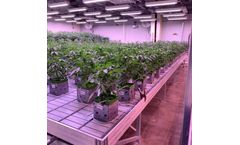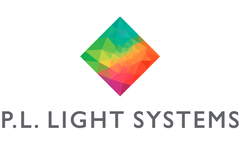Crop Lighting Articles & Analysis
11 articles found
Crop registration - an essential piece of the puzzle No matter how well controlled a growing environment is, environmental conditions are bound to vary from time to time. This can be due to the weather conditions in your natural climate, interactions between different plant species or even changes in your operational practices. It’s essential to gain knowledge and understanding of all of ...
And when light levels are not optimized for production, or the type of crop you are growing, you are going to have slower flowering, poor root development and plant structure, as well as reduced yields. There are four factors that should be evaluated when considering supplemental light for your crop: light ...
Cucumber, tomato and peppers are similar crops in that they all require high light intensities for proper growth and development. Since light intensity is tied to overall yield and crop productivity, supplemental lighting is an important factor for ensuring consistent yields and quality. Because vine ...
Upon further investigation, the crops in question were grown entirely under each light source. Not in a veg room under one type of light and then moved to flower. ...
That is what light level or how much light is needed for a crop. Light source choices can come down to costs of electricity, municipality rebates or incentives and even heating and cooling costs, so what is right for you may not be right for others. ...
That is what light level or how much light is needed for a crop. Light source choices can come down to costs of electricity, municipality rebates or incentives and even heating and cooling costs, so what is right for you may not be right for others. ...
Studies show that sufficient amount of blue light at the end of lettuce production line ensures colorization of red lettuce varieties. ...
The choice of substrate growing media is dependent on the grower’s preference, crop type, water quality, size of irrigation system, and price. Importance of choosing the right lights for your greenhouse crops? ...
The paper, “Meeting the Global Food Demand of the Future by Engineering Crop Photosynthesis and Yield Potential,” calls for exploring and, if possible, exploiting, a number of modifications to photosynthesis that could improve its efficiency, from better balancing the light-capturing and sugar-making parts of the process to making the most of the sun ...
ByEnsia
Canopy reflectance sensing for assessing crop N health has been proposed as a technology to base side-dress variable-rate N application. Objectives of this research were to evaluate the use of active-light crop-canopy reflectance sensors for assessing corn N need, and derive the N fertilizer rate that would return the maximum profit relative to a ...
Farmers face challenges in utilising technologies for producing high quality crops; meaningful manipulation of light, nutrients, water and plants is possible only when plant responses to environmental conditions are understood. Genetic engineering can produce plants with desirable characteristics, but society is not yet convinced that benefits gained outweigh ...








